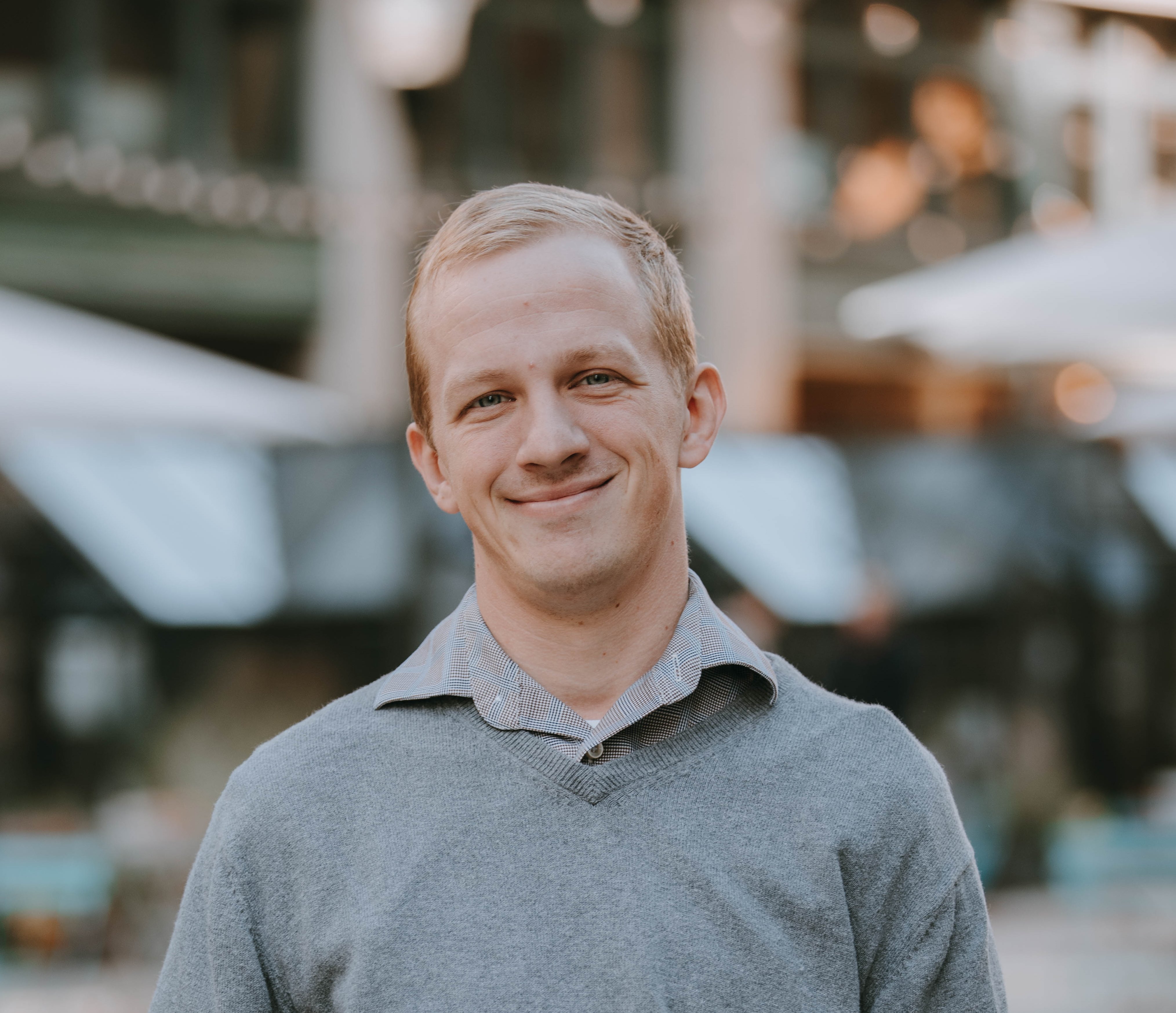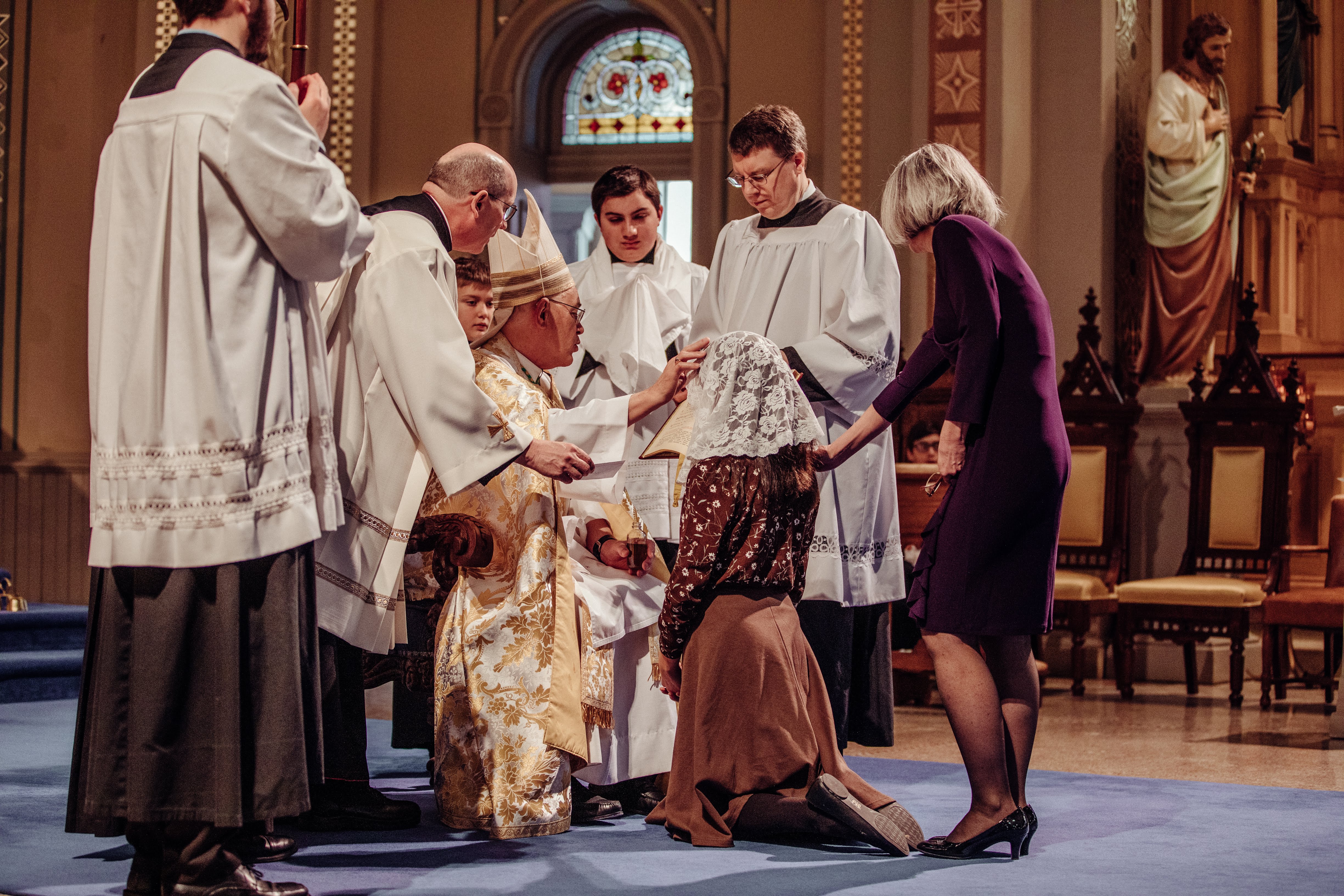Special celebration with Oakland County group a return to history for one of Detroit's most historic churches
DETROIT — Standing at the high altar of Old St. Mary’s Church in Greektown, Detroit Auxiliary Bishop Donald Hanchon chanted the Introit, Kyrie and Gloria.
It was the first celebration of the Tridentine Latin Mass on a Sunday in the historic, 1885-built church in more than 50 years — a timeless celebration in a truly awe-inspiring worship space.
The setting for the special celebration was the invitation of Old St. Mary’s, one of Detroit's most iconic historic churches, to host the Oakland County Latin Mass Association for a special confirmation Mass in the extraordinary form, in which Bishop Hanchon confirmed five young people in a manner that has been celebrated for centuries prior.
Bishop Hanchon welcomed members of the organization while acknowledging the presence of Old St. Mary’s parishioners interested in the Tridentine Mass, as well as guests who attended the celebration.
While the celebration was the first on a Sunday for the Greektown church in a half-century, the parish also hosts the St. Benedict Tridentine Catholic Community at 7 p.m. on every First Friday of the month for a Tridentine High Mass.

The Pontifical Low Mass was possible because the Oakland County Latin Mass Association’s usual place of worship, the chapel at the Academy of the Sacred Heart in Bloomfield Hills, was booked. So Sunday’s confirmation was a chance for the confirmandi to receive the sacrament in an extra special setting.
“The Oakland County Latin Mass Association has only been in existence since 2013, started by laypeople who petitioned the archbishop and the Congregation for the Doctrine of the Faith to recognize the organization and have Masses,” Msgr. Ronald Browne, judicial vicar of the Archdiocese of Detroit and the group's chaplain, told Detroit Catholic.
“Most of the (regular) congregation at Sacred Heart is under 40 years of age,” Msgr. Browne said. “I’ve asked some of the younger people why they choose to worship in this form, and they tell me there is a deep reverence in the celebration. They said there is something comforting with the routine, the ritual.”
Old St. Mary’s celebrates the Novus Ordo (New Order, the liturgy most commonly practiced after the Second Vatican Council) Mass in English and Latin on Sunday mornings, but the church retained the Communion rail and high altar necessary for a Tridentine, ad orientum Mass, in which the priest is facing the high altar, as opposed to ad populum, when the priest faces the people.
Randy Bowers, operations manager at Old St. Mary’s, said parishioners and visitors enjoy worshiping at the church because they appreciate the more traditional, historical parts of the faith and the use of historical church architecture to encounter God in a counter-cultural way.
“People enjoy Old St. Mary’s because of the reverence of what is going on,” Bowers said.
During the Rite of Confirmation after Mass, Bishop Hanchon told the confirmandi it is their job to bring that holiness from within the church, which stems from the presence of Christ, to the world.
“What you are called to do as we wait for God’s harvest is to go out to where the weeds grow and be a witness to God’s plan with much mercy,” Bishop Hanchon said, “because there might be a conversion of others, through our presence. God needs you to be a witness, and not just any witness, but a witness with a heart full of the love of Jesus.”

Msgr. Browne said having the Tridentine Mass at Old St. Mary’s on a Sunday allowed those not familiar with the older rite — or perhaps those who remember it from decades ago — to experience the tradition and mannerisms of an older form of worship. He added those not familiar with traditional Latin Masses would still recognize the gestures and rituals associated with the Mass.
“There are many similarities between the structure of the Mass, with first the Liturgy of the Word, then the Liturgy of the Eucharist, it is the same in both,” Msgr. Browne said. “I think people will notice that throughout the whole liturgy. There is a prayerfulness. They will recognize the sign of the cross, some of the terminology in the Scripture, first proclaimed in Latin, then in English.
“As a celebrant, the major difference is celebrating the Latin Mass ad orientem, where we are all facing the tabernacle, facing God together, whereas in the Novus Ordo, I’m facing the people,” Msgr. Browne explained. “That’s a change that I have to adapt to. I enjoy celebrating both liturgies; I find both lead to tremendous spiritual growth.”
Since the Pope Benedict XVI’s motu proprio, Summorum Pontificum, was issued in 2007, allowing for a wider celebration of the Tridentine Latin Mass, there has been a growing interest among parishioners and priests in the traditional setting.
Alex Begin, board member and liturgical coordinator of the Oakland County Latin Mass Association, has been organizing Latin Masses in the Archdiocese of Detroit and Windsor, Ontario, for more than 30 years and has helped trained almost 100 priests across the country in celebrating the extraordinary form.
“I think Latin Mass offers so much to everyone who comes to it,” Begin said. “Some are interested in the music — it’s the music that hooked me to begin with, even though I’m not a musician. For others, it’s the idea of worshiping in the same way as our ancestors, in the way St. John Vianney gave praise. It’s a way of celebrating with our ancestors, the martyrs and the saints, and it continues today.”
Salvatore LaMendola, a member of the Oakland Country Latin Mass Association, said the weekly Masses at the Academy of the Sacred Heart, with the silence and formality in the Sunday liturgy, help him find God’s grace throughout the week.
“When you enter a church like this, you get the idea you are entering something different, a sacred space, and you need that,” LaMendola said. “You are in the world for a whole week, a space with so much insanity at times, but here, you have the structured liturgy. It’s hard to describe, but you are surrounded by beauty, the tradition, the ceremony. You really can’t find it anywhere else.”

Begin describes the Latin liturgy as being very similar to the Novos Ordo Mass in the vernacular that most Catholics are familiar with. The Kyrie, Gloria, readings, Gospel, Offertory and Eucharist are all in the same order, but the Traditional Latin Mass offers additional elements that enhance the celebration of the Eucharist.
“The traditional Mass inspires a commitment; you fall in love with it,” Begin said. “When you understand the Traditional Latin Mass, you want to live a more Catholic life; you want to learn more about the Church calendar, learn more about devotions.
“It makes you want to practice your faith more,” Begin added. “And not just in the extraordinary form. I find myself going to ordinary form Masses during the week, learning about how to live out my Catholic life week to week, outside of Sundays.”
As the confirmandi were taking pictures with Bishop Hanchon, Old St. Mary’s parishioners and Oakland County Latin Mass Association members were eating doughnuts and drinking coffee in the parish’s social hall, sharing stories about their respective communities.
Begin expressed hope that devotees of both the ordinary and extraordinary forms would begin to see the commonalities between the two and to find ways for parishes to minister to all who wish to celebrate the Eucharist in the one, holy, Catholic and apostolic Church.
“I have lived through the 'battle days' of the '80s and '90s, between (devotees of both forms), and for the most part, those are long gone,” Begin said. “The stigma isn’t really in the majority opinion of people regarding the Latin Mass. It is more and more being recognized as another form of liturgy, and I totally see more of a demand and want for the extraordinary form. As that demand grows, more and more parishes will learn how to implant both in parish life, as we all find our way to find Christ in His Church.”










